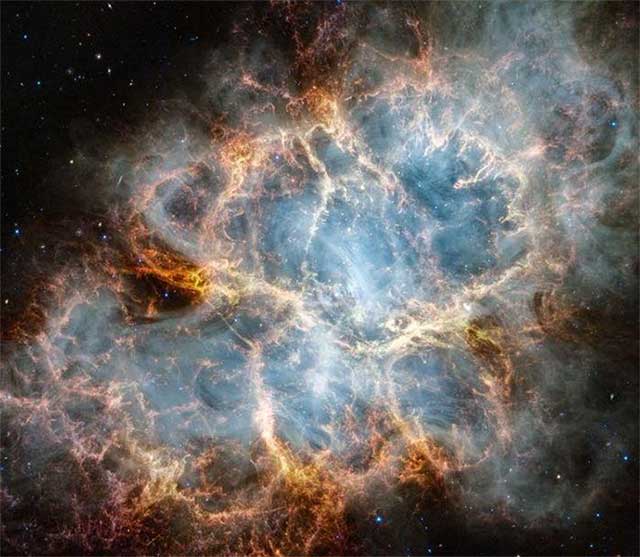Never-before-seen image of the Crab Nebula revealed by the James Webb Telescope
The Crab Nebula is the remains of a supernova explosion in the constellation Taurus located 6,500 light years away .
Astrologers in China, Japan and the Middle East first spotted a 'crab' in the night sky in 1054, recording observations of what they believed to be a new star. It was later determined that the phenomenon was actually light from a supernova explosion that had hit Earth.

The Crab Nebula through the James Webb Telescope. (Photo: NASA).
Historical evidence of supernova explosions is extremely rare, which is why this nebula is of such great interest.
Although the Crab Nebula has been observed for a long time, modern astronomers still have questions about the dead star and the chemical composition of the glowing clouds it creates.
The Crab Nebula has been observed by other telescopes, including the Hubble Space Telescope. However, the James Webb Space Telescope's ability to observe the universe in infrared light, which is invisible to the naked eye, has been able to cut through the nebula's dusty layers to pick out previously unseen features.
Researchers used the James Webb Space Telescope's near-infrared camera and mid-infrared instruments to study the Crab Nebula in an attempt to better understand its origins.
"The James Webb Telescope's sensitivity and spatial resolution allowed us to precisely determine the composition of the emitted materials, especially iron and nickel , which could reveal the type of explosion that created the Crab Nebula ," astronomer Tea Temim of Princeton University in New Jersey said in a statement.
Astronomers will continue to analyze data from the James Webb Telescope and compare it with data collected from other telescopes. These observations could help them go back in time to decipher what happened before the star that created the Crab Nebula exploded.
- Unique images in the universe from the James Webb telescope
- Admire spectacular images of the universe through the James Webb telescope
- NASA finished assembling $ 9.7 billion telescope
- Spectacular set of images of galaxies and nebulae taken by James Webb telescope
- Hundreds of distant galaxies seen through the James Webb . telescope
- James Webb telescope completes final test, set to launch in October
- Image of the James Webb telescope seen from Earth
- James Webb Telescope Collides in Space
- James Webb telescope reveals the truth about the planet from nowhere, where sand turns to clouds
- NASA reversed the time of launching the James Webb space telescope until 2020
- Telescope James Webb will search for alien life
- Hubble sends a detailed image of the Crab Nebula
 Van Allen's belt and evidence that the Apollo 11 mission to the Moon was myth
Van Allen's belt and evidence that the Apollo 11 mission to the Moon was myth The levels of civilization in the universe (Kardashev scale)
The levels of civilization in the universe (Kardashev scale) Today Mars, the sun and the Earth are aligned
Today Mars, the sun and the Earth are aligned The Amazon owner announced a secret plan to build a space base for thousands of people
The Amazon owner announced a secret plan to build a space base for thousands of people